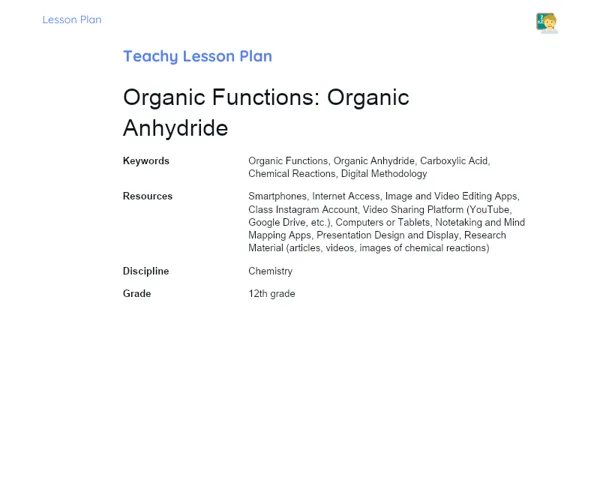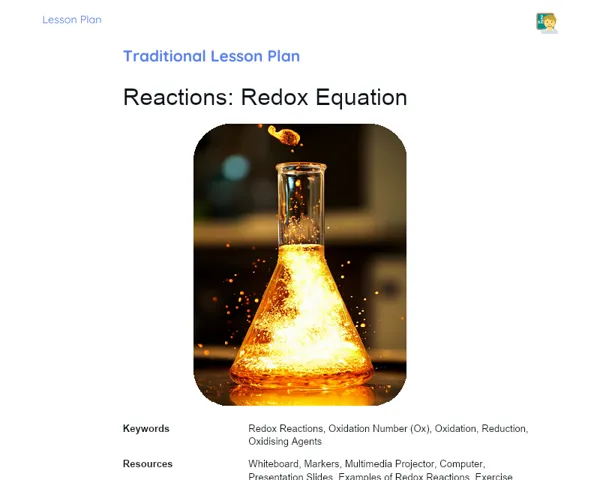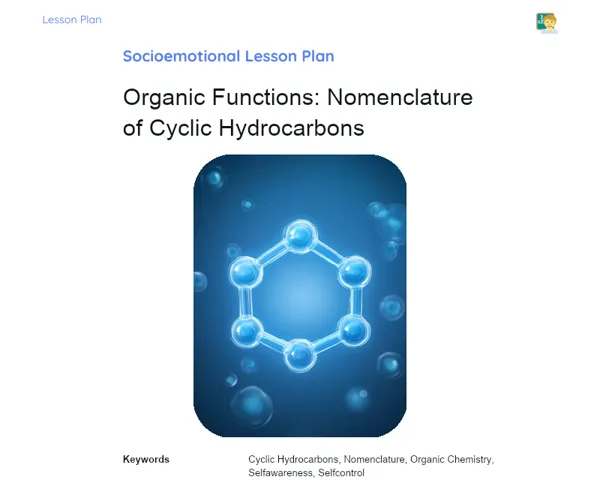Lesson Plan | Active Methodology | Initial Aspects of Matter
| Keywords | matter, properties, volume, mass, density, body, object, practical activities, investigation, application of knowledge, group discussion, interaction, debate, logical reasoning, teamwork, historical contextualisation, chemistry concepts |
| Necessary Materials | clue kits with information about mass, volume, and density, building materials (cardboard, plastic, metal, etc.), obstacles for the racing circuit, model, measurement tools such as scales and measuring tapes |
Premises: This Active Lesson Plan assumes: a 100-minute class duration, prior student study both with the Book and the beginning of Project development, and that only one activity (among the three suggested) will be chosen to be carried out during the class, as each activity is designed to take up a large part of the available time.
Objective
Duration: (5 - 10 minutes)
This section of the lesson plan aims to set out the central objectives that will guide classroom activities. By clearly defining what is expected for learners to absorb, a structure is created for the lesson’s development, allowing both the teacher and the learners to maintain a clear focus during practical activities. This approach aims to maximise comprehension and engagement with the content studied at home, reserving classroom time for application and deeper understanding.
Objective Utama:
1. To equip learners with an understanding of the basic aspects of matter, including its definition and significance in the study of Chemistry.
2. To enable learners to clearly distinguish between the concepts of matter, body, and object, using examples and practical applications.
3. To assist learners in identifying and describing the main characteristics and properties of matter, such as mass, volume, and density, among others.
Objective Tambahan:
- To foster interaction and discussion among learners to strengthen collective grasp of the presented concepts.
- To develop analytical and synthesis skills in practical situations associated with matter and its properties.
Introduction
Duration: (15 - 20 minutes)
The introduction of the lesson serves to engage learners by linking theoretical understanding with relevant practical and historical examples. By using problem-based scenarios, learners are prompted to apply concepts of matter, body, and object in a practical context, stimulating critical thinking. The historical and practical references heighten interest and showcase the relevance of Chemistry studies in real life.
Problem-Based Situation
1. Imagine you're cooking and need to adjust the recipe to serve a bigger crowd. How do the properties of matter, like mass and volume, play a role in these adjustments?
2. Consider a submarine submerging. How are the concepts of matter, density, and volume involved in allowing the submarine to go under and surface in a controlled manner?
Contextualization
Grasping the properties of matter is crucial not just for scientists but also for everyday tasks like cooking and understanding natural occurrences, such as how a boat stays afloat. Additionally, stories like that of Archimedes and his principle illustrate how these ideas have historically been foundational.
Development
Duration: (75 - 85 minutes)
The development phase is crafted to allow learners to actively apply the concepts of matter, body, and object they have previously studied. Through engaging and challenging activities, they can solidify their theoretical understanding by tackling situations that require the direct use of their acquired knowledge. This approach not only enhances learning but also encourages teamwork, critical thinking, and practical application of knowledge in creative contexts.
Activity Suggestions
It is recommended that only one of the suggested activities be carried out
Activity 1 - The Mystery of the Missing Matter
> Duration: (60 - 70 minutes)
- Objective: To apply knowledge about the properties of matter to solve an investigative problem, fostering logical reasoning and teamwork skills.
- Description: In this activity, learners take on the role of detectives investigating a case where certain materials have gone missing from the Chemistry lab. They need to apply their understanding of the properties of matter to determine which materials were taken, based on the clues left at the scene.
- Instructions:
-
Divide the class into small groups of up to 5 learners.
-
Distribute a clue kit to each group that includes details about the mass, volume, and density of the materials.
-
Ask learners to calculate and deduce, based on the clues, which materials correspond to the listed properties.
-
Each group must present their findings, justifying their conclusions using the properties of matter studied.
Activity 2 - World Builders
> Duration: (60 - 70 minutes)
- Objective: To understand and utilise properties of matter in practical engineering and design challenges, promoting creativity and collaboration.
- Description: Learners are tasked with designing a model of a new planet using various materials. They must think about properties of matter such as mass, volume, and density when selecting materials for different structures.
- Instructions:
-
Create groups of up to 5 learners.
-
Provide various construction materials (cardboard, plastic, metal, etc.) along with details of their properties.
-
Learners must plan and construct a model of their planet, deciding the best uses for each material based on its properties.
-
Groups present their models and explain their choice of materials and reasoning.
Activity 3 - The Great Particle Race
> Duration: (60 - 70 minutes)
- Objective: To help learners visualise and physically experience properties of matter, assisting in the understanding of abstract Chemistry concepts through an engaging physical activity.
- Description: In this lively activity, learners compete in an obstacle race that simulates how particles behave in varying states of matter. They must navigate challenges representing properties like viscosity and density.
- Instructions:
-
Set up the classroom as an obstacle course with stations representing different properties of matter.
-
Organise learners into groups of up to 5, with each group representing a particle.
-
Each station of the course presents a task related to a specific property of matter they need to conquer.
-
Learners discuss how the properties of matter affect particle movement and relate the activity to the concepts they've studied.
Feedback
Duration: (15 - 20 minutes)
This phase of the lesson plan aims to reinforce the knowledge acquired by learners throughout the lesson via a reflective and interactive discussion. It allows learners to articulate their understanding, questions, and ideas, fostering a deeper grasp of the concepts related to matter, body, and object. Additionally, the exchange of ideas among groups encourages collaborative learning, allowing learners to learn from one another.
Group Discussion
Kick off the discussion by doing a general review of the activities undertaken. Invite each group to share their findings and insights gained during the activities. Encourage learners to talk about how the properties of matter played a role in their solutions and how these concepts can be applied to real-life scenarios. Use open-ended questions to promote participation and lively debate.
Key Questions
1. Which properties of matter presented the biggest challenge during the activities and why?
2. How did understanding the differences between matter, body, and object aid in tackling the presented activities?
3. In what ways can the knowledge gained about the properties of matter be applied to everyday scenarios?
Conclusion
Duration: (10 - 15 minutes)
This phase of the lesson plan aims to ensure that all learners have a firm grasp of the concepts discussed throughout the lesson, linking them to the practical activities undertaken. It's a key moment for reinforcing learning, providing any final clarifications, and highlighting the relevance of the topics covered for learners' practical and academic lives.
Summary
In this conclusion, we will recap the essential concepts covered regarding the properties and definition of matter, body, and object. Learners will have revisited the key characteristics such as mass, volume, and density, and applied this knowledge in practical activities that reflect real and theoretical situations.
Theory Connection
Today's lesson was crafted to connect theory with practice in a cohesive manner. Through fun and investigative activities, learners applied the theory they studied at home to resolve practical challenges in the classroom, demonstrating the real-life applicability of concepts related to matter.
Closing
Understanding the properties of matter is crucial not just for science but for grasping everyday phenomena like cooking or why certain objects sink or float. This knowledge forms the bedrock for a solid foundation in Chemistry, which they will continue to explore throughout their learning journey.



